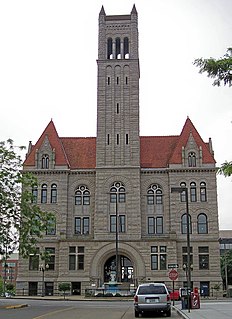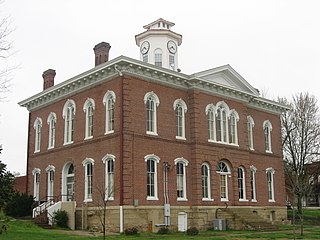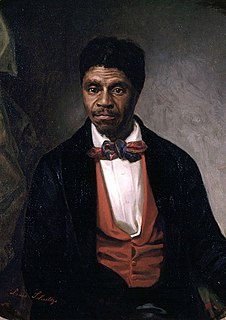
Wood County is a county in the U.S. state of West Virginia. As of the 2010 census, the population was 86,956, making it West Virginia's fifth-most populous county. Its county seat is Parkersburg. The county was formed in 1798 from the western part of Harrison County and named for James Wood, governor of Virginia from 1796 to 1799.

Tucker County is a county in the U.S. state of West Virginia. As of the 2010 census, the population was 7,141, making it West Virginia's second-least populous county. Its county seat is Parsons. The county was created in 1856 from a part of Randolph County, then part of Virginia. In 1871, a small part of Barbour County, was transferred to Tucker County. The county was named after Henry St. George Tucker, Sr., a judge and Congressman from Williamsburg, Virginia.

Irion County is a county located on the Edwards Plateau in the U.S. state of Texas. As of the 2010 census, its population was 1,599. Its county seat is Mertzon. The county is named for Robert Anderson Irion, a secretary of state of the Republic of Texas.

Calhoun County is a county located in the U.S. state of Texas. As of the 2010 census, the population was 21,381. Its county seat is Port Lavaca. The county is named for John Caldwell Calhoun, the seventh vice president of the United States.

Johnson County is a county located in the U.S. state of Tennessee. As of the 2010 census, the population was 18,244. Its county seat is Mountain City. It is the state's northeasternmost county, sharing borders with Virginia and North Carolina.

Anderson County is a county located in the U.S. state of Tennessee. As of the 2010 census, its population was 75,129. Its county seat is Clinton.

Madison County is a county in the U.S. state of Illinois. According to the 2010 census, it had a population of 269,282. The county seat is Edwardsville, and its largest city is Granite City.

Johnson County is a county located in the U.S. state of Illinois. According to the 2010 census, it has a population of 12,582. Its county seat is Vienna. It is located in the southern portion of Illinois known locally as "Little Egypt".

Franklin County is a county located in the U.S. state of Idaho. As of the 2010 Census the county had a population of 12,786. The county seat and largest city is Preston. The county was established in 1913 and named after Franklin D. Richards, an Apostle of The Church of Jesus Christ of Latter-day Saints. It is the only Franklin County in the United States that is not named after Benjamin Franklin.

Graeagle is a census-designated place (CDP) located about 60 miles (97 km) from Reno, Nevada and 46 miles (74 km) from Truckee, California in Plumas County, California, United States. The population was 737 at the 2010 census, down from 831 at the 2000 census.

Fernandina Beach is a city in Nassau County, Florida, United States, on Amelia Island. It is the northernmost city on Florida's Atlantic coast, and is one of the principal municipalities comprising Greater Jacksonville. The area was first inhabited by the Timucuan Indian tribe. Located on Amelia Island, known as the "Isle of 8 Flags", Fernandina has had the flags of the following nations flown over it since 1562: France, Spain, Great Britain, Spain (again), the Republic of Florida, the Green Cross of Florida, Mexico, the Confederate States of America, and the United States. It is the only municipality in the United States that has flown eight different national flags.

Orrington is a town on the Penobscot River estuary in Penobscot County, Maine, United States. The population was 3,733 at the 2010 census.

St. Johnsbury is the shire town of Caledonia County, Vermont, United States. The population was 7,603 at the 2010 census. St. Johnsbury is located approximately 10 miles (16 km) northwest of the Connecticut River and 48 miles (77 km) south of the Canada-U.S. border.

The United States Census is a decennial census mandated by Article I, Section 2 of the United States Constitution, which states: "Representatives and direct Taxes shall be apportioned among the several States ... according to their respective Numbers .... The actual Enumeration shall be made within three Years after the first meeting of the Congress of the United States, and within every subsequent Term of ten Years." Section 2 of the 14th Amendment states: "Representatives shall be apportioned among the several States according to their respective numbers, counting the whole number of persons in each State, excluding Indians not taxed." The United States Census Bureau is responsible for the United States Census. The Bureau of the Census is part of the United States Department of Commerce.

The Twentieth United States Census, conducted by the Census Bureau, determined the resident population of the United States to be 226,545,805, an increase of 11.4 percent over the 203,184,772 persons enumerated during the 1970 Census. It was the first census in which a state – California – recorded a population of 20 million people, as well as the first in which all states recorded populations of over 400,000.
The United Kingdom Census of 1851 recorded the people residing in every household on the night of Sunday 30 March 1851, and was the second of the UK censuses to include details of household members. However, this census added considerably to the fields recorded in the earlier 1841 UK Census, providing additional details of ages, relationships and origins, making the 1851 census a rich source of information for both demographers and genealogists.
Events from the year 1861 in the United Kingdom.

This timeline of events leading up to the American Civil War describes and links to narrative articles and references about many of the events and issues which historians recognize as origins and causes of the Civil War. The pre-Civil War events can be roughly divided into a period encompassing the long-term build-up over many decades and a period encompassing the five-month build-up to war immediately after the election of Abraham Lincoln as President in the Election of 1860, which culminated in the Fall of Fort Sumter.















